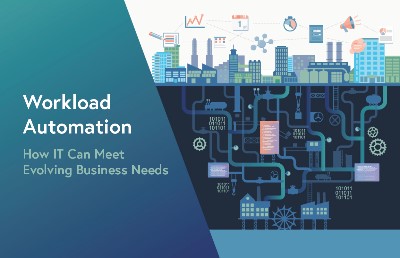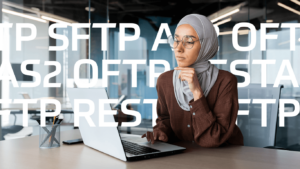Infrastructure Automation is Key to Modernization at Gartner IOCS
Infrastructure Automation allows IT to integrate, automate, and manage workloads and resources. See what Gartner had to say about it at this year's IOCS.

The Future of IT Infrastructure
Digitalization, digital transformation, modernization, or digital business. It doesn’t really matter what we call it, every 21st century IT department shares two pressing concerns:
- How to manage a revolving door of applications, platforms, and systems; and,
- How to deliver the right resources to those tools at the right time.
This was a central message of Gartner’s recent IT Infrastructure, Operations & Cloud Strategies (IOCS) conference last month.
“At a glance, what does 2025 look like?” asked Dennis Smith, a VP analyst with Gartner, during IOCS’s opening keynote. “Well, your application and infrastructure will be everywhere.”
According to Gartner, 80% of workloads are currently running on-premises, while only 19% of workloads are in a public cloud and only 1% are running at the edge. Gartner expects this to rapidly change.
By 2025, 40% of workloads will be in a public cloud and 30% will be at the edge, where compute and storage capabilities “will very much rival what you have on-premises,” explained Smith.
“In 2025, the question of where your datacenter is will be meaningless as your applications and infrastructure will be everywhere, and that includes the edge.”
Meeting Business Requirements in the 21st Century
Infrastructure complexity comes from the growing number of applications and platforms that IT must manage.
- Business units (BUs) go around IT to implement new tools faster than IT can
- IT implements redundant tools in order to meet the needs of individual BUs
- Data and compute resources reside in a mix of on-premises, virtual, cloud, and hybrid infrastructure
The result is a complex, jumbled map of interconnected tools. In order to meet business requirements, IT needs a better way to manage its tools, best practices, and resources.
“Don’t focus on building infrastructure that will last, focus on building infrastructure that can change,” said Julia Palmer, a VP analyst with Gartner, during IOCS’s opening keynote. “Because you don’t know, five years from now, what workloads you will need to run at the edge, or on what edge, or what cloud vendor you’ll be working with.”
Even more to Palmer’s point, we don’t know what vendors will exist five years from now.
There are three criteria IT infrastructure needs to meet in order to manage “a very large and fluid vendor pool”. Infrastructure needs to be:
- Programmable
- Modular
- Intelligent
“Automation orchestration is a necessary step to getting AI-driven operations. Do not settle for solutions that require ‘hands to keyboard’ for any day-to-day operations,” explained Palmer.
Business needs are rapidly evolving.
Stay ahead of new tech trends and business demands with unified orchestration from ActiveBatch.
Silos of Automation Slow Down IT
Modern IT needs tools that can centralize and automate resources, quickly integrate new tools, and enable reliable cross-platform workflows.
“Automation is to the infrastructure what blood is to the body. You cannot have modern infrastructure without automation,” said Smith.
“What we currently see is a lot of opportunistic automation. A lot of it is very much reactive. But to be competitive, and to be successful in the future, you must evolve from IT task automation and IT service automation to business service automation. And with business service automation, I mean the tethering of the underlying infrastructure automation activities with efficient business processes.”
Many organizations approach automation on an ad hoc basis. Instead of implementing a unified automation framework, functional teams within IT implement automation solutions for narrow use cases. This fragmented approach adds to IT’s complexity, slows down IT’s response times, and makes it even more difficult for IT to automate and connect its infrastructure to business processes —especially as those business processes become more dynamic and more diverse.
The solution, as Palmer put it during the IOCS keynote, is to develop intelligent infrastructure that “takes simple, repeatable building blocks and integrates, orchestrates, and manages them in a standardized, automated manner.”
Use Case: How Workload Automation Can Drive Modernization
There were three major requirements for modern IT infrastructure described in the opening keynote at this year’s IOCS:
- Ability to manage resources and workloads across on-premises, virtual, and cloud environments
- Ability to integrate a growing number of diverse tools from a fluid pool of vendors
- Support for a unified approach to automation (orchestration) instead of an opportunistic approach
An enterprise workload automation solution like ActiveBatch provides hundreds of prebuilt connectors that allow IT teams to pass data and dependencies between digital tools, regardless of vendor or underlying technology.
Because ActiveBatch is a cross-platform automation solution, IT can readily develop end-to-end workflows across multiple systems and platforms. This enables IT to take a unified approach to infrastructure automation, centralizing management of its workloads and resources and seamlessly integrating new tools and technologies.
With ActiveBatch, IT can use intelligent facilities that optimize the use of resources across multi-vendor, hybrid environments. Machine learning takes the guess-work out of allocation, ensuring that the right resources go to the right workloads at the right time. A full suite of monitoring, alerting, and auto-remediation capabilities further simplify IT operations, while no-code/low-code development tools help IT to extend governance and best practices across the enterprise.
IT can modernize its infrastructure and operations management and foster a culture of digital innovation.
“We can make it easy for individuals and teams to go from thought to action at the speed of business,” said Roger Williams, senior director analyst, at the closing of IOCS’s keynote. “They can experiment and explore and then expand what works, quickly.”
“This is how infrastructure-led disruption adds new dimensions to the art of the possible. This is how I&O becomes the enabler of digital business.”
Ready to see how we make workload automation easy?
Schedule a demo to see how easy it is to build and maintain your jobs in ActiveBatch.








